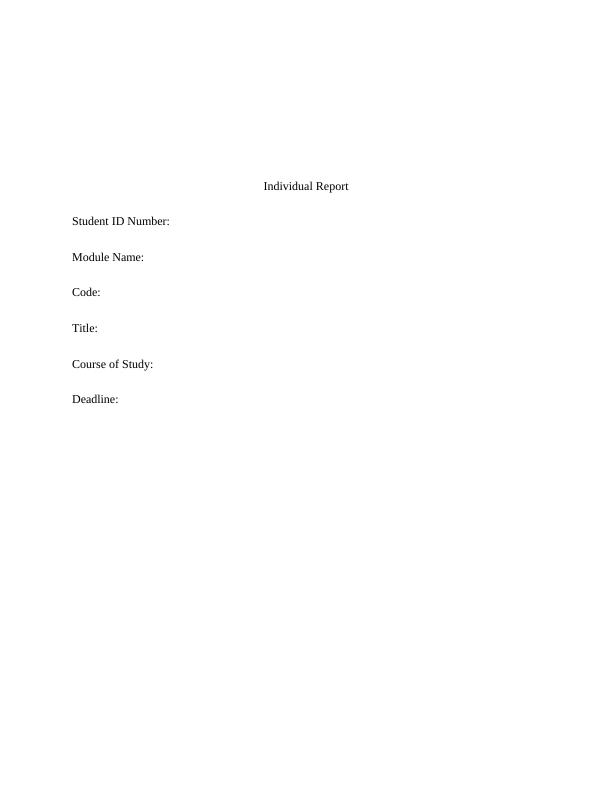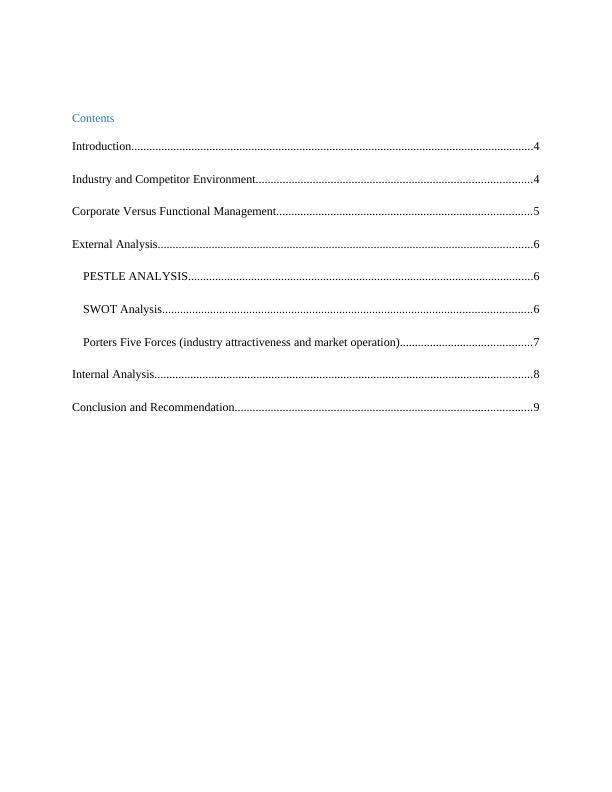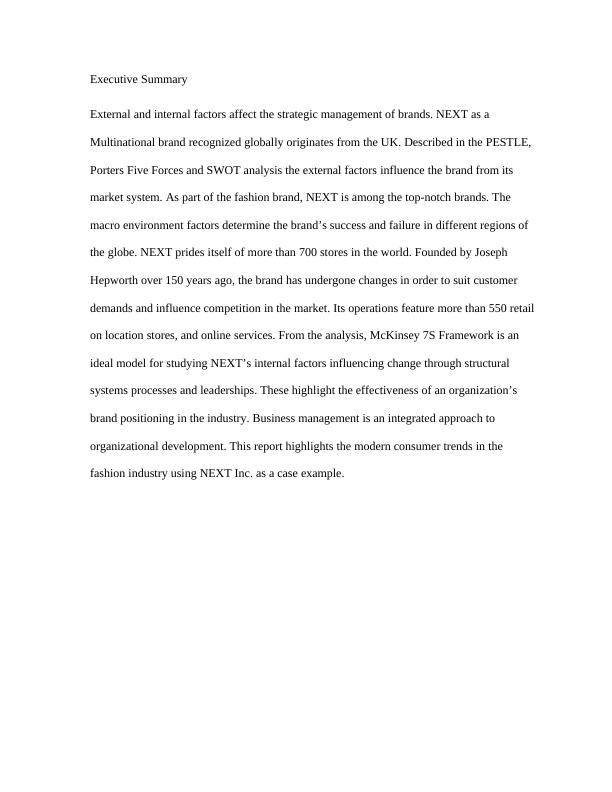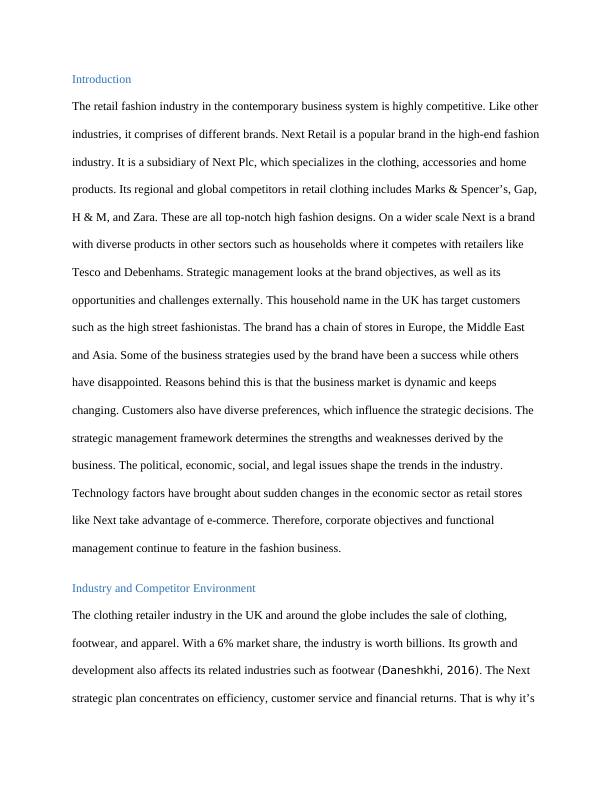Introduction to Internal Analysis of the Global Competition
17 Pages3139 Words446 Views
GSM London
Added on 2020-03-04
About This Document
Individual Report Overview Next Student ID Number: Module Name: Code: Title: Course of Study: Deadline: Contents Introduction 4 Industry and Competitor Environment 4 Corporate Versus Functional Management 5 External Analysis 6 PESTLE ANALYSIS 6 SWOT Analysis 6 Porters Five Forces (industry attractiveness and market operation) 7 Internal Analysis 8 Conclusion and Recommendation 9 Executive Summary External and internal factors affect the strategic management of brands. Described in the PESTLE, Porters Five Forces and SWOT analysis the external factors influence the
Introduction to Internal Analysis of the Global Competition
GSM London
Added on 2020-03-04
ShareRelated Documents
End of preview
Want to access all the pages? Upload your documents or become a member.
Strategic Analysis of Manchester United Football Club
|15
|4705
|41
Strategic Management of Zara: Market Changes, Technology, and Competition
|10
|2592
|22
Strategic Management And Functions Of Marks And Spencer (M&S)
|16
|4544
|864
Strategic Options for H&M: An Analysis
|12
|3319
|26
SWOT Analysis of H&M based on PESTLE, Porter's Five Forces and VRIO
|8
|1731
|2
Strategic Management assignment : Next plc
|9
|2787
|161




